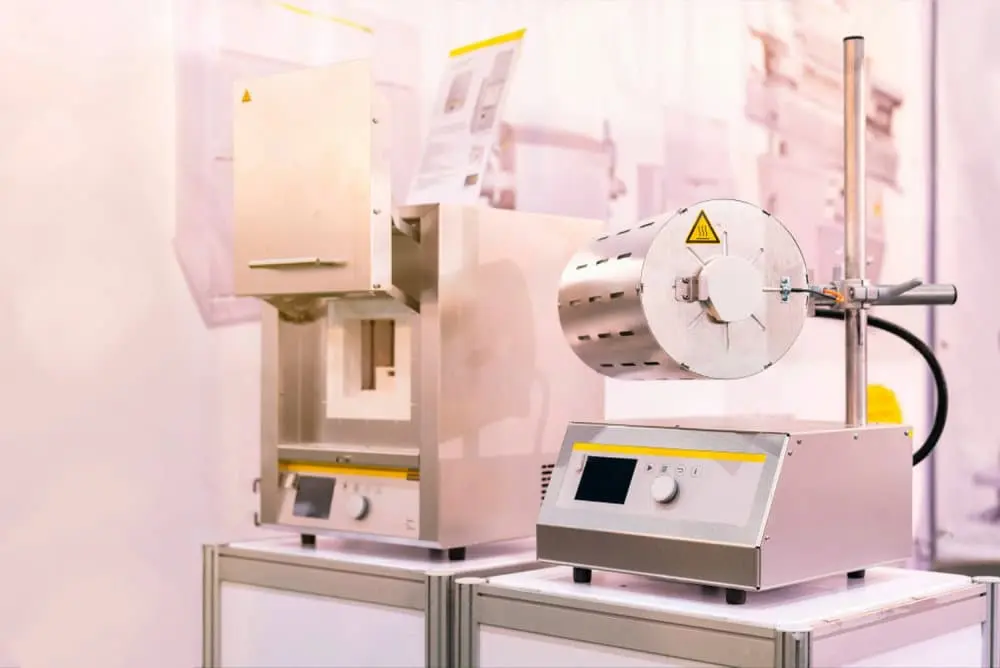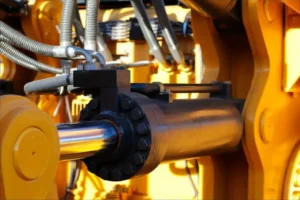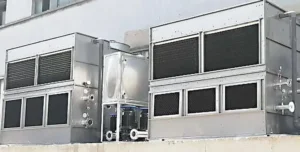Вакуумные печи и индукционные печи широко используются в процессах термообработки., but they differ significantly in their heating principles, application ranges, and working characteristics. Understanding these differences can help manufacturers and engineers select the right equipment for their specific needs.

Heating Principle
Vacuum Furnace
A vacuum furnace operates in a vacuum or controlled atmosphere environment, which is critical for processes that require the elimination of contaminants like oxygen and moisture. The heating process in a vacuum furnace typically involves resistive or radiant heating. Electrical resistance heating elements (например, resistance wires or graphite elements) generate heat, which is then radiated to the material being processed.
The vacuum environment not only prevents oxidation but also reduces the presence of impurities in the atmosphere, thus protecting sensitive materials during processes such as high-temperature annealing or sintering. This isolation helps preserve material properties, avoid discoloration, and prevent contamination.
Индукционная печь
An induction furnace utilizes the principle of electromagnetic induction for heating. It consists of an induction coil that creates a high-frequency alternating magnetic field. When metal is placed within this field, the induced current (вихревой ток) flows through the material, generating heat due to the material’s electrical resistance.
The heat is generated directly inside the material itself, allowing for precise control over the heating process. This method is especially efficient for metals due to their high conductivity. The induction heating process is faster than resistive heating because the energy is directly transferred to the workpiece, reducing heat losses.
Application Scope
Vacuum Furnace
Vacuum furnaces are primarily used for high-temperature treatments that require strict control over the environment. This includes processes such as:
- High-temperature sintering
- Annealing of metals, сплавы, and ceramics
- Purification of materials (например, removing gases or contaminants)
- Manufacturing of high-precision components (например, semiconductors, optoelectronic devices)
Due to the vacuum or controlled atmosphere, vacuum furnaces are ideal for materials that are sensitive to oxidation, contamination, or other environmental factors. They are also used in industries where high purity is crucial, такие как аэрокосмическая промышленность, электроника, and advanced materials manufacturing.
Индукционная печь
Индукционные печи, с другой стороны, are more versatile and are primarily used for metalworking applications, включая:
- Metal melting and smelting
- Casting and forging
- Heat treatment processes (например, закалка, укрепление)
Induction heating is particularly useful for applications requiring high-speed heating and precise temperature control. These furnaces are ideal for industries where rapid turnaround and energy efficiency are important, such as in steel production, automotive manufacturing, and foundries.
Induction furnaces can also be adjusted to handle a wide range of materials, from ferrous metals like steel to non-ferrous metals like copper and aluminum, making them a key tool in both small and large-scale metalworking operations.
Working Characteristics
Vacuum Furnace
Vacuum furnaces are known for their high precision and ability to maintain stable thermal environments. The process typically involves several stages, включая:
- Вакуум creation: The chamber is evacuated to create the desired pressure (often close to a perfect vacuum).
- Обогрев: Materials are heated using resistive or radiant heat sources.
- Контроль атмосферы: In some cases, controlled atmospheres (например, nitrogen or hydrogen) can be introduced during heating to further protect the materials.
- Охлаждение: Once the process is complete, the materials are carefully cooled to avoid thermal shock.
The vacuum furnace allows for exceptional control over the thermal profile, which is essential for high-precision processes. Более того, because materials are not exposed to external contaminants, there is minimal oxidation or other forms of degradation.
Индукционная печь
Induction furnaces offer fast heating, high efficiency, and precise control over the heating process. Key characteristics include:
- Быстрая скорость нагрева: Induction heating provides rapid temperature rise, which increases overall production efficiency.
- Энергоэффективность: Induction heating is highly efficient as it directly heats the material, minimizing energy loss.
- Clean operation: Induction furnaces are environmentally friendly as they do not produce emissions like coal furnaces, which significantly reduces pollution and improves worker safety by eliminating exposure to harmful fumes.
- Cost-effective: Induction heating reduces material wastage due to its precise heating control, which in turn lowers costs related to material loss and tooling.
The induction furnace also has the advantage of being able to handle a variety of materials with different sizes and shapes, making it suitable for a range of metalworking and heat treatment applications.
Comparison Summary
| Особенность | Vacuum Furnace | Индукционная печь |
| Heating Method | Resistive or radiant heating in a vacuum environment | Электромагнитная индукция |
| Environment | Vacuum or controlled atmosphere for contamination prevention | Open atmosphere (or slightly controlled in some cases) |
| Приложения | High-temperature sintering, отжиг, semiconductor fabrication, high-purity material processing | Metal melting, Кастинг, термическая обработка (закалка, укрепление), ковка |
| Преимущества | Prevents oxidation, maintains material integrity, высокая точность | Fast heating, энергоэффективность, рентабельный, clean operation |
| Источник энергии | Electric heating elements | High-frequency electric current for induction heating |
| Material Types | Metals, керамика, сплавы, and sensitive materials | Primarily metals (ferrous and non-ferrous) |
Заключение
Both vacuum furnaces and induction furnaces have their distinct advantages, and the choice between them largely depends on the specific needs of the manufacturing process. Vacuum furnaces are ideal for processes requiring a controlled, low-oxygen environment to prevent material degradation, making them essential for high-purity and high-precision applications. On the other hand, induction furnaces are preferred for applications involving rapid heating, энергоэффективность, and high-volume production, particularly in the metalworking industry.
Selecting the right furnace requires careful consideration of factors such as the type of material being processed, the specific treatment required, and the desired throughput.







